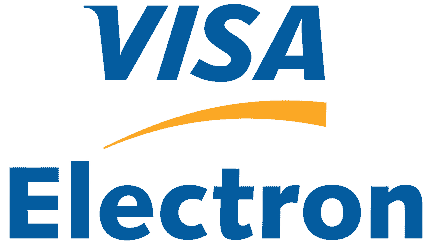In today’s fast-moving world, businesses must quickly adapt to new disruptions or risk falling behind. But what does this mean for the travel and expense (T&E) landscape? And how will evolving T&E trends impact your organization?
For example, we’ve already seen emerging AI use cases like predictive analytics for spend management starting to simplify travel management and expense reporting. Additionally, in response to power shifts in the travel industry, travel management companies (TMC) have carried on with consolidation.
In 2025, travelers will demand more personalized, self-service booking options, along with real-time updates for disruptions, safety and health concerns.
getty
SAP Concur experts expect to see these trends continue—if not accelerate—into 2025. In anticipation of the trends shaping T&E in 2025, here are four key predictions to watch.
Prediction #1: Slowing Inflation Will Increase Travel Opportunity
More for your money
In 2023, inflation pushed travel spending beyond pre-pandemic levels, with business travel spending expected to reach $1.48 trillion by the end of 2024, according to the Global Business Travel Association. But travel volume didn’t keep up, resulting in higher costs for fewer trips. As inflation slows, companies can expect to get more value from their T&E budgets.
Meeting traveler expectations
Travelers will demand more personalized, self-service booking options, along with real-time updates for disruptions, safety and health concerns. Blended business and leisure trips are also on the rise. Companies must offer flexible travel policies to retain workforce productivity and satisfaction.
Staying ahead
To stay ahead, focus on offering streamlined, personalized booking experiences to employees, with options like loyalty recognition, detailed transportation and hotel information, and real-time travel alerts. Apps should help travelers with everything from passport renewals to real-time updates on political unrest and environmental hazards.
On the back end, bringing T&E into one integrated platform is key. Disjointed systems only increase costs and errors, while a unified system enhances the user experience and enables smarter budgeting, better negotiations and fewer mistakes.
Prediction #2: Trust in Generative AI for Travel and Spend Management Will Grow
AI’s impact on T&E
AI will continue to make waves in T&E management. As finance and travel teams adjust policies to accommodate AI, automation will reduce the administrative burden. AI will increasingly handle tasks like validating transactions for compliance, identifying fraud and spotting spending patterns that would go unnoticed by humans. Expect smarter audits, fewer manual expense reports and more time spent on exceptions.
AI will also enhance the booking experience, offering personalized itinerary recommendations based on traveler preferences and organizational policies. Generative AI will assist in price forecasting, making pre-trip approvals more accurate, while chatbots will provide real-time trip updates and disruption management.
Two paths for AI
By 2025, finance leaders will embrace AI to improve decision-making, forecast spending and manage risk. Travelers, however, will remain cautiously optimistic about AI. Although the SAP Concur Sixth Annual Global Business Travel Survey found that 95% of business travelers are open to using AI, they’ll approach it as a “handy assistant” rather than fully trusting it to manage bookings or submit expense reports.
Prediction #3: TMC Consolidation Will Continue, and NDC Will Benefit Airlines and Travelers
TMC consolidation and content concerns
TMCs will continue to consolidate, gaining more negotiating power with suppliers. This may result in lower costs and better deals for customers. In addition, the trend of content fragmentation will slow; by 2025, both airlines and business travelers will fully realize the benefits of New Distribution Capability (NDC), including better personalization, bundling and continuous pricing.
Capitalizing on trends
To navigate these changes, ensure your T&E system can work with any TMC and offer diverse travel options, from hotels to low-cost carriers and rail networks. Flexibility in your travel platform will allow you to adapt to shifting supplier landscapes and maximize savings.
Prediction #4: Finance Leaders Will Collaborate Across the C-Suite to Implement Emerging Technologies
Finance’s growing impact
Finance’s influence will continue to grow, with CFOs increasingly partnering with IT and security teams to ensure the safe, efficient implementation of new technologies. This includes assessing investments in AI tools for T&E management to increase efficiency, ensure compliance and improve overall cost control.
Data integration and security
In 2025, finance will play a key role in integrating data across functions to eliminate silos, improving efficiency and security. With cybersecurity risks on the rise, finance will collaborate with IT to strengthen infrastructure, minimize exposure, optimize costs and improve resiliency.
Sustainability
As travel volumes increase, organizations will face more pressure to meet sustainability regulations. Finance will help guide investments in technology solutions that prioritize compliance, such as tools for carbon tracking or incentives for sustainable travel.
Collaboration for growth
Finance leaders will work with HR, IT and engineering teams to identify opportunities for business expansion, process automation and innovation. This cross-functional collaboration will help ensure tech investments align with both financial and non-financial goals, such as ESG and talent recruitment initiatives.
A Positive Outlook for T&E
While no prediction is guaranteed, the future of T&E looks promising. Expect breakthroughs in AI, system integration, diversity of travel options and cross-functional collaboration. These innovations will not only help you manage travel and expenses more effectively but also move your business forward faster.










